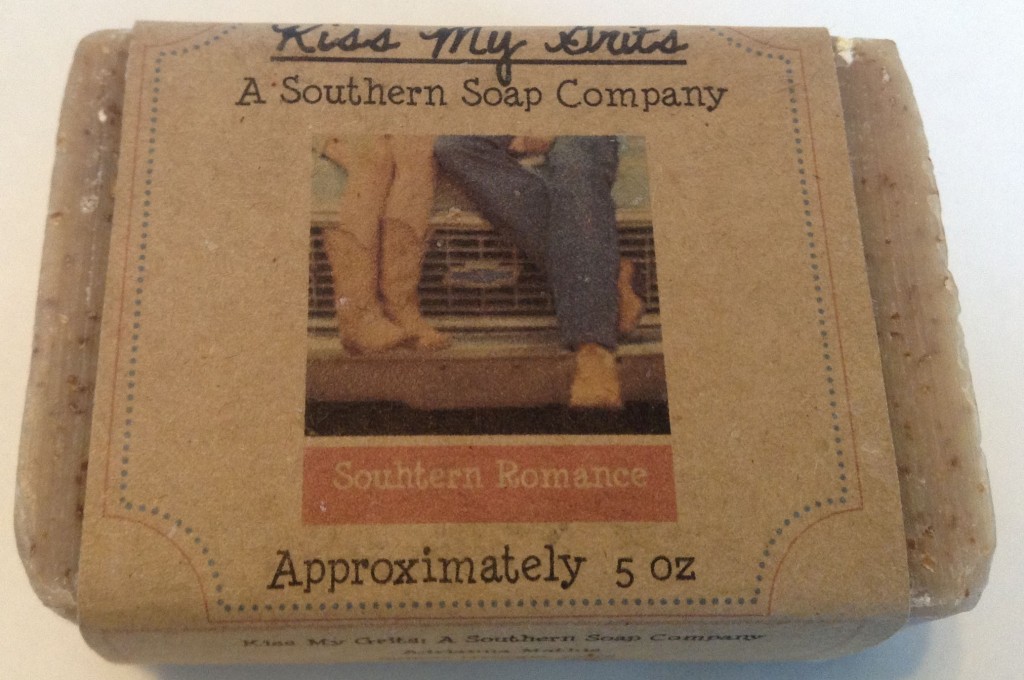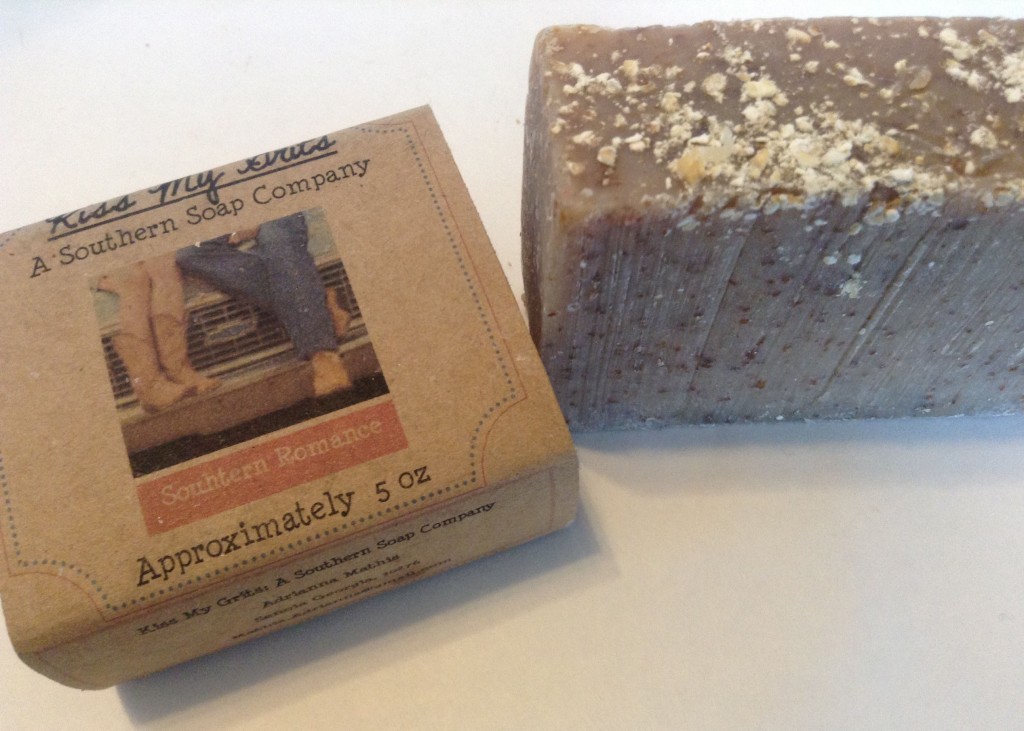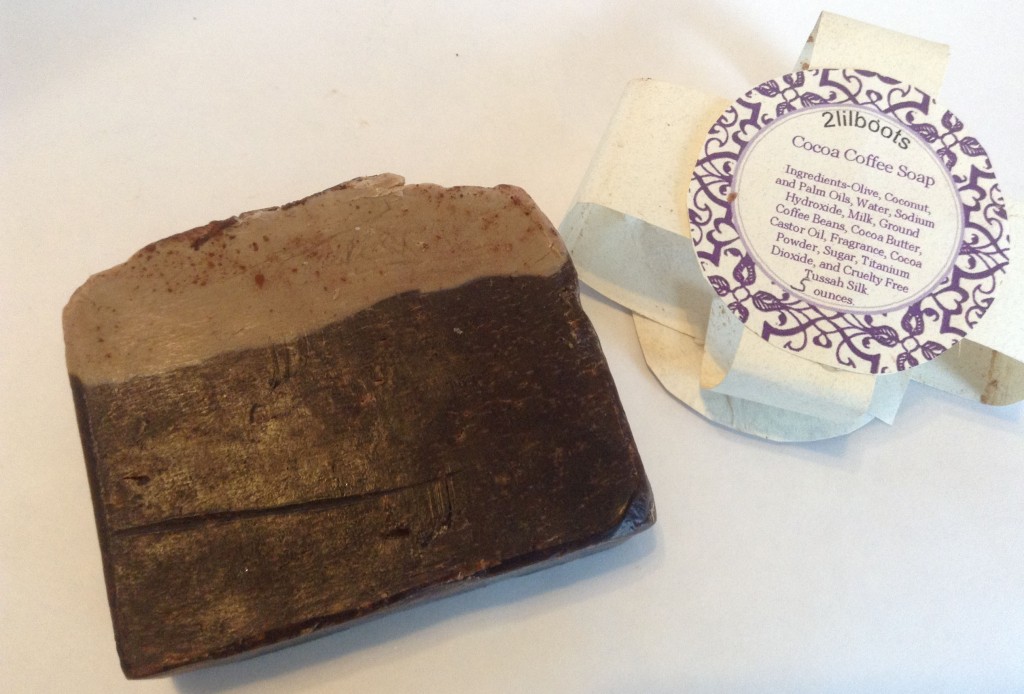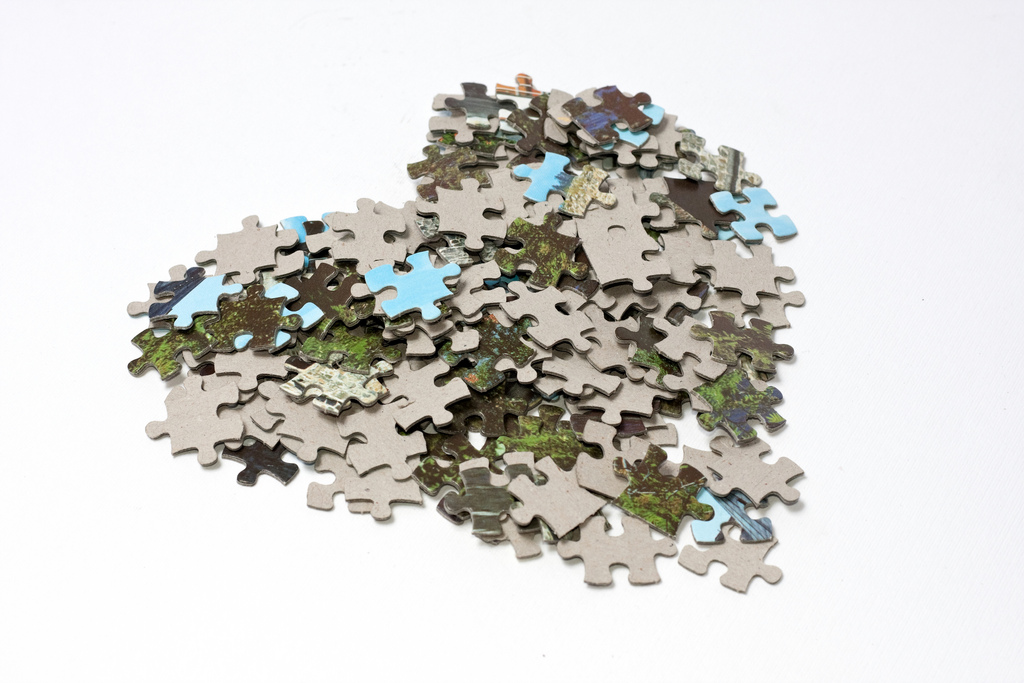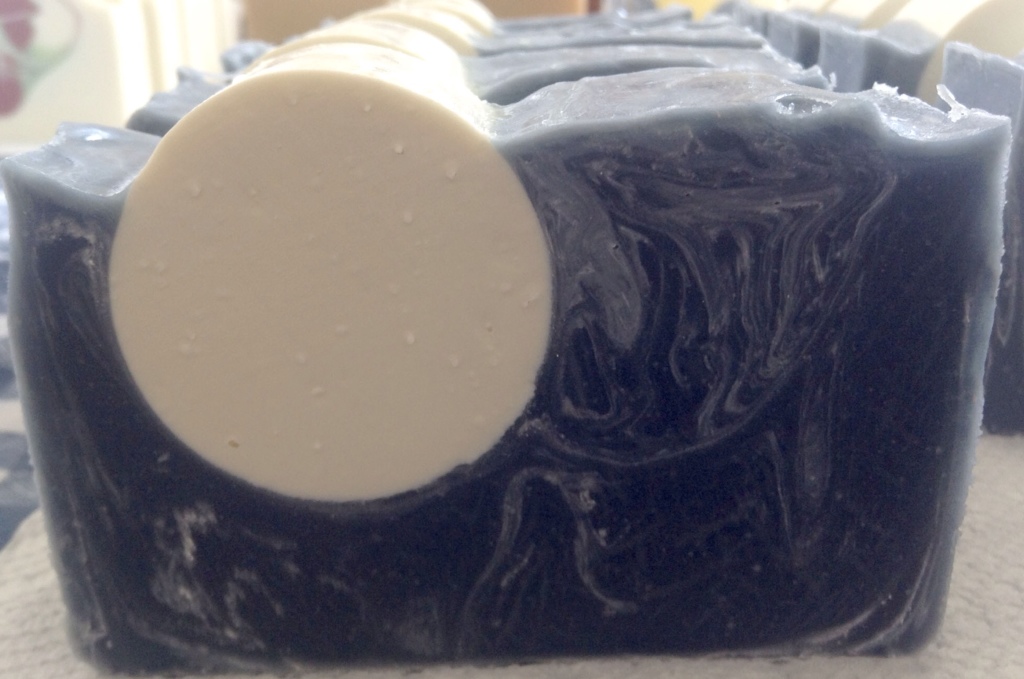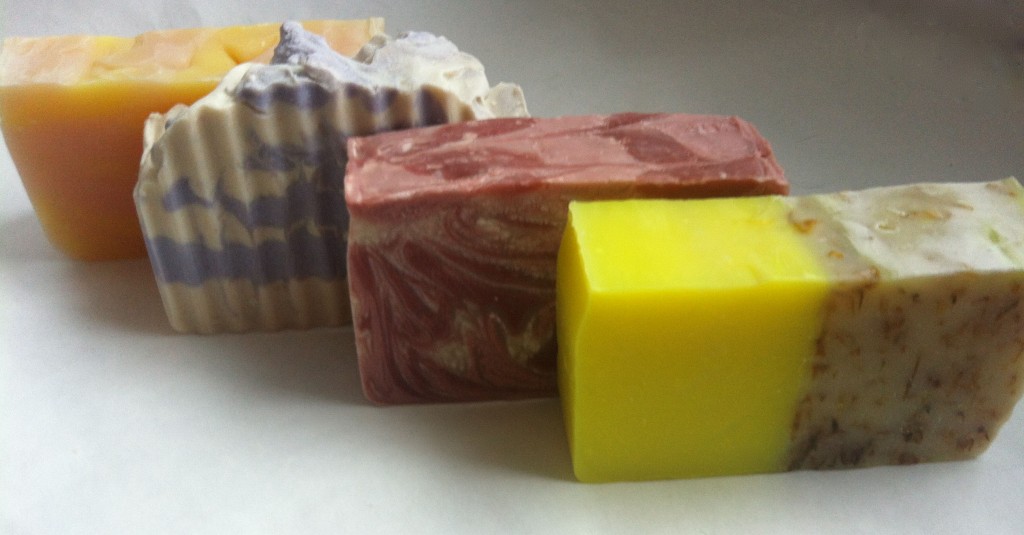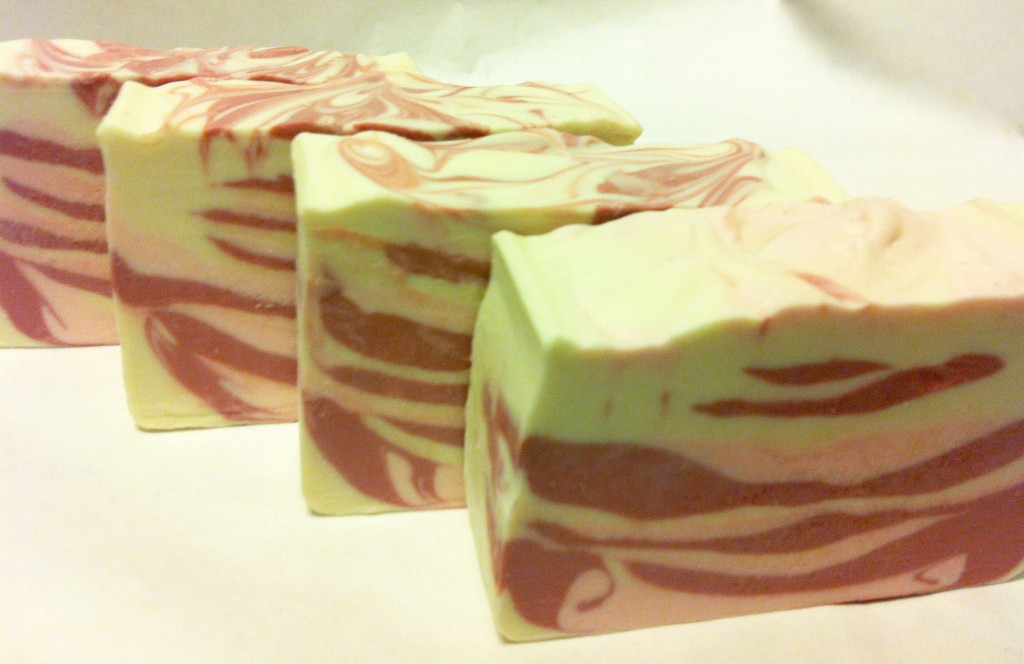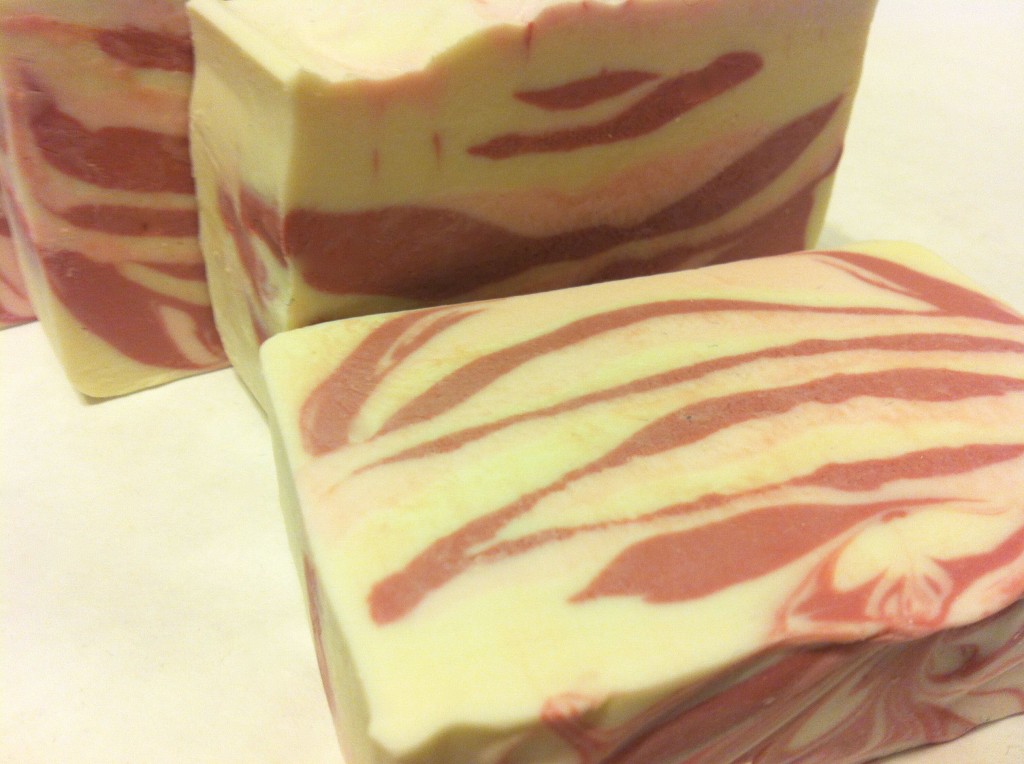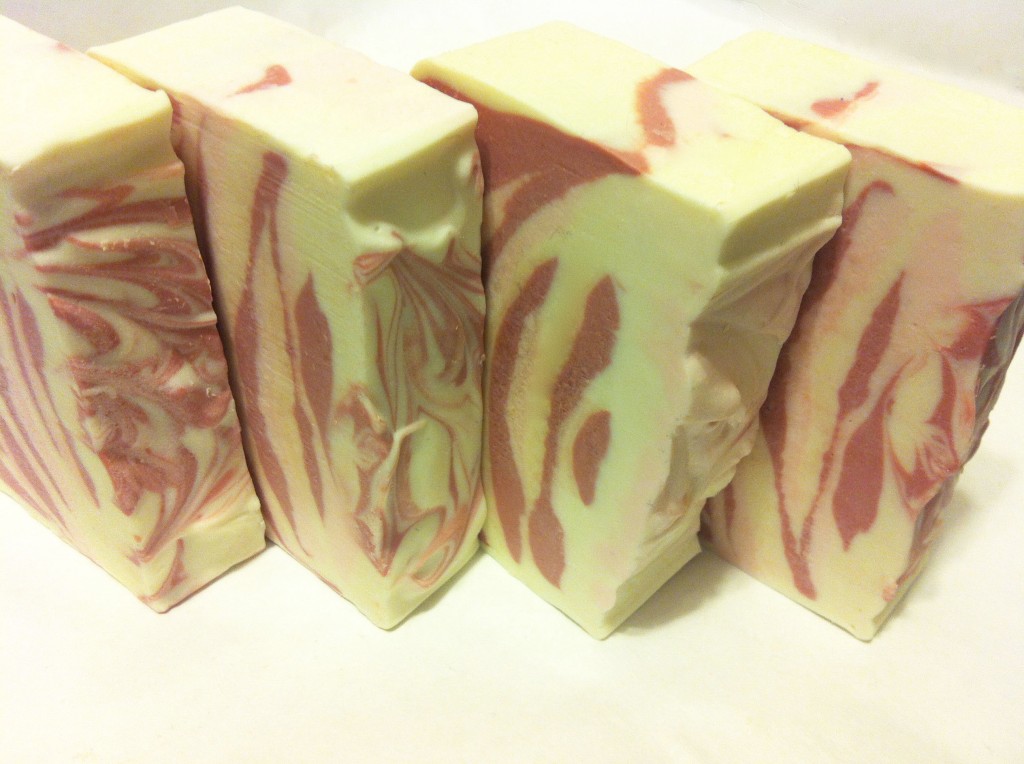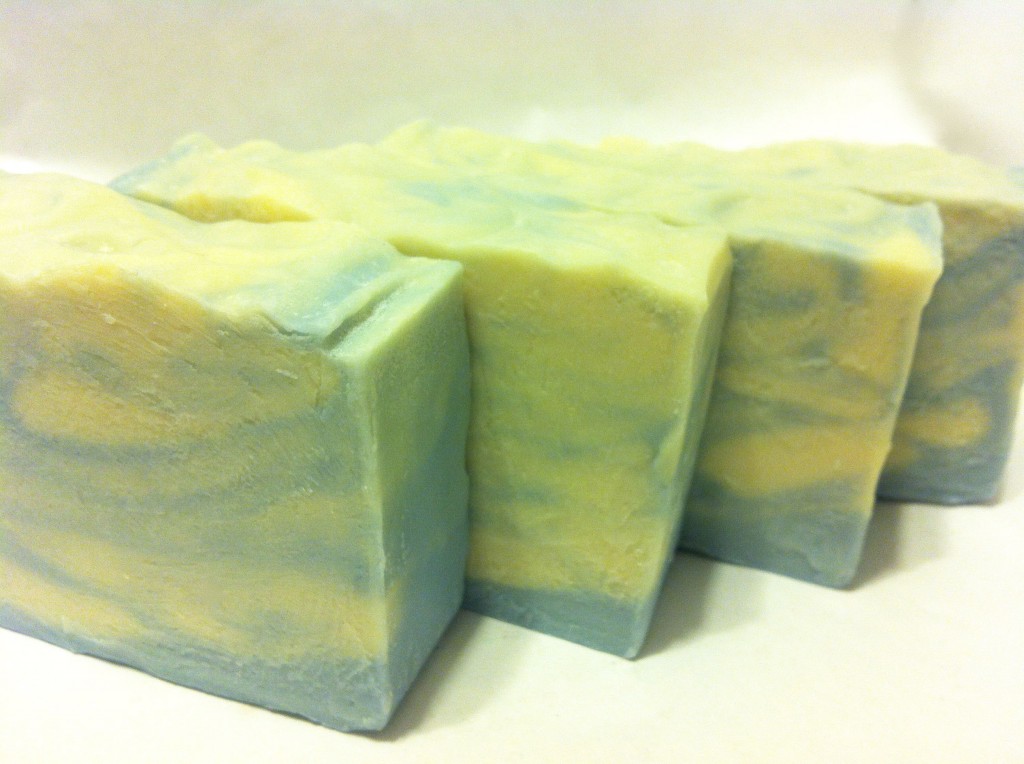I absolutely adore the artistry in soaps. Talented soapmakers can do some really incredible things with color, swirls, and embeds that just blow me away. But my first love is natural-looking and rustic homemade soap. It was through a natural soapmaker that I was first introduced to handmade soap. This soapmaker was at my local farmer’s market every week, and I was entranced by some of her soaps. I never bought it (my daughter did once), but her Sunrise soap with an orange slice tucked in the top and litsea cubeba and blood orange essential oils captivated me. I started using her Dead Sea mud bar on my face, and I noticed how much better it was for my skin.
I stocked up on these soaps as I prepared to move to Massachusetts because I knew I most likely wouldn’t be ordering them online, and I was determined to see if I could figure out how to make soaps myself. The first soaps I made on my own were natural-looking soaps. When I first started, I had every intention of making 100% natural soaps, but I quickly realized that there was nothing wrong with soap colorants and fragrance oils, and in fact, fragrance oils have undergone testing to ensure that they are skin-safe while essential oils are not as regulated. Using these materials in my handmade soaps did not hurt their quality. They were still handmade, which is better than any commercial soap.
I haven’t made any natural-looking soap in a while, however, with the exception of my Lavender Oatmeal soap.
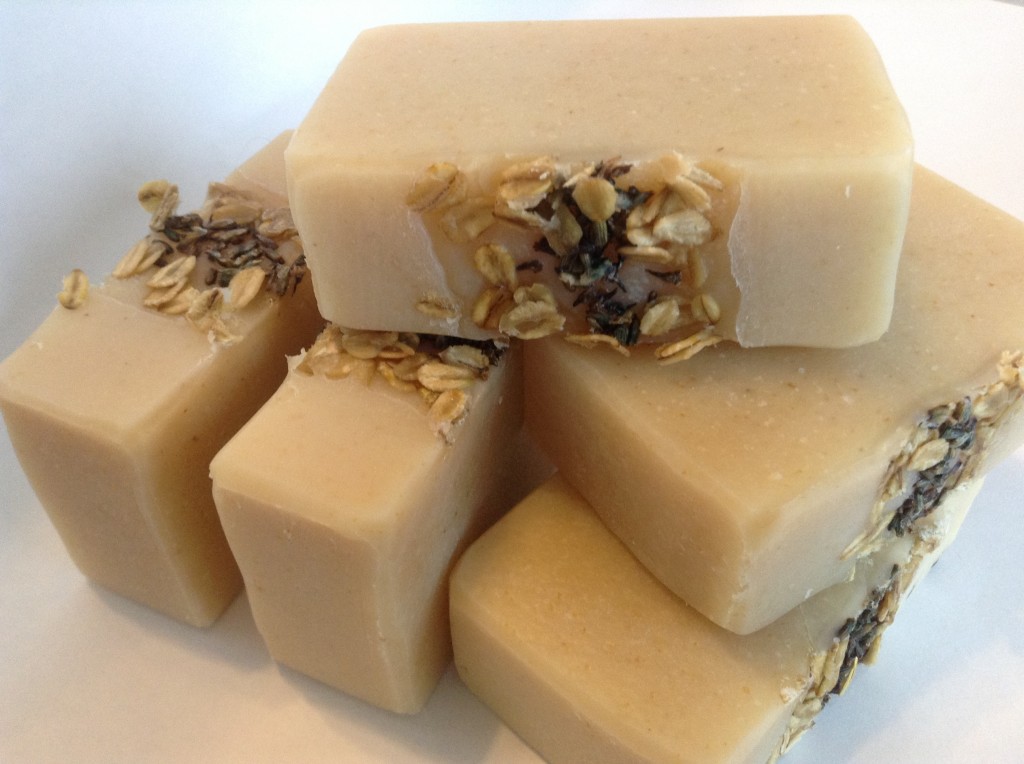 This soap is absolutely DIVINE, and I really wish it got a little more love. I adore it. It has a thick, luscious lather and it smells amazing—it’s scented with lavender essential oil and oatmeal, milk, and honey fragrance. It is made with aloe vera juice and finely ground oatmeal to make it extra good for your skin. I have given most of the first batch I made away. My children’s teachers will receive the last of it in a bath basket I’m putting together for end-of-year gifts. One of the nice things about being a soapmaker is that I always have the very excellent gift of handmade soap at the ready for any occasion.
This soap is absolutely DIVINE, and I really wish it got a little more love. I adore it. It has a thick, luscious lather and it smells amazing—it’s scented with lavender essential oil and oatmeal, milk, and honey fragrance. It is made with aloe vera juice and finely ground oatmeal to make it extra good for your skin. I have given most of the first batch I made away. My children’s teachers will receive the last of it in a bath basket I’m putting together for end-of-year gifts. One of the nice things about being a soapmaker is that I always have the very excellent gift of handmade soap at the ready for any occasion.
Another natural soap that has been a big hit with friends and family and a few customers is my Oatmeal, Milk, and Honey.
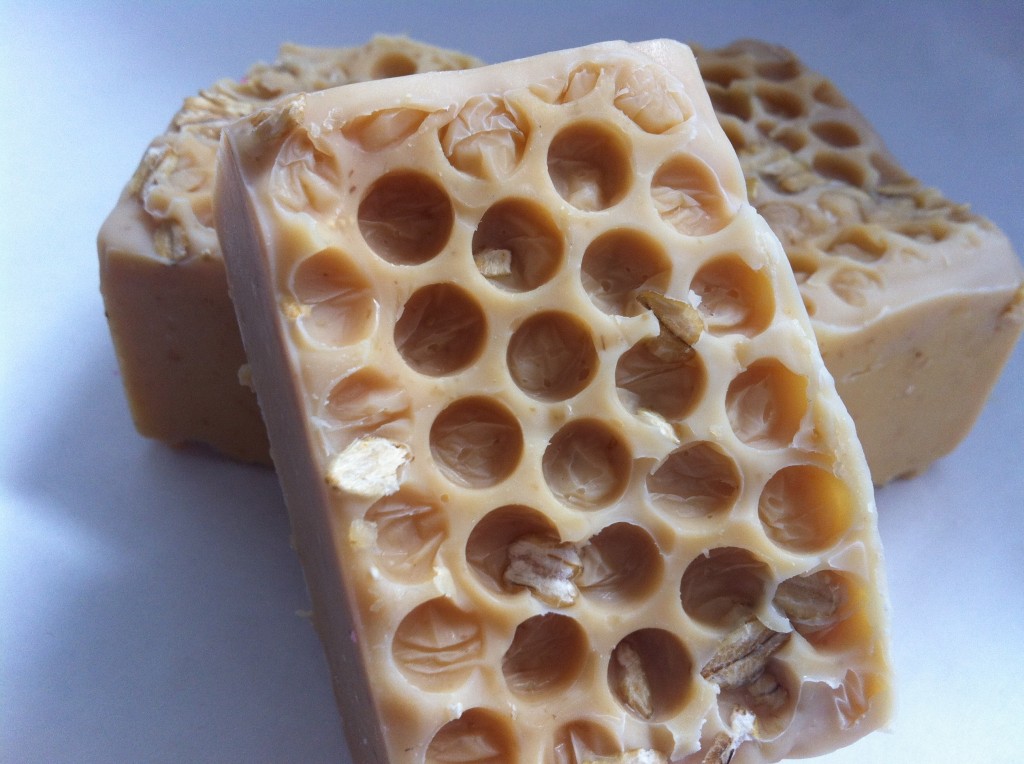 It’s a very pretty soap, and the Oatmeal, Milk, and Honey fragrance oil is yummy. I make this in an unscented variety, too, and it also smells pretty good. I actually like the smell of goat milk. Is that weird? Honey smells awesome in soap.
It’s a very pretty soap, and the Oatmeal, Milk, and Honey fragrance oil is yummy. I make this in an unscented variety, too, and it also smells pretty good. I actually like the smell of goat milk. Is that weird? Honey smells awesome in soap.
I recently received a package of soaps from fellow soapmakers participating in a swap. They made some lovely, natural-looking and, in some cases, rustic soaps.
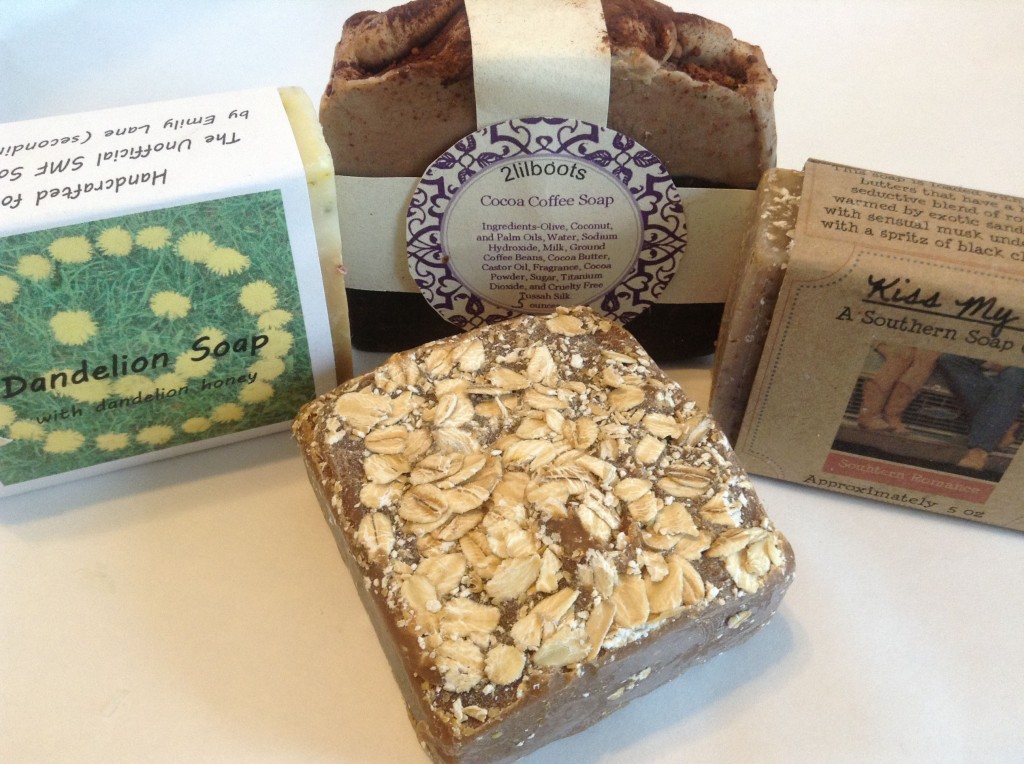 Seriously, how delicious does this cinnamon oatmeal soap look?
Seriously, how delicious does this cinnamon oatmeal soap look? 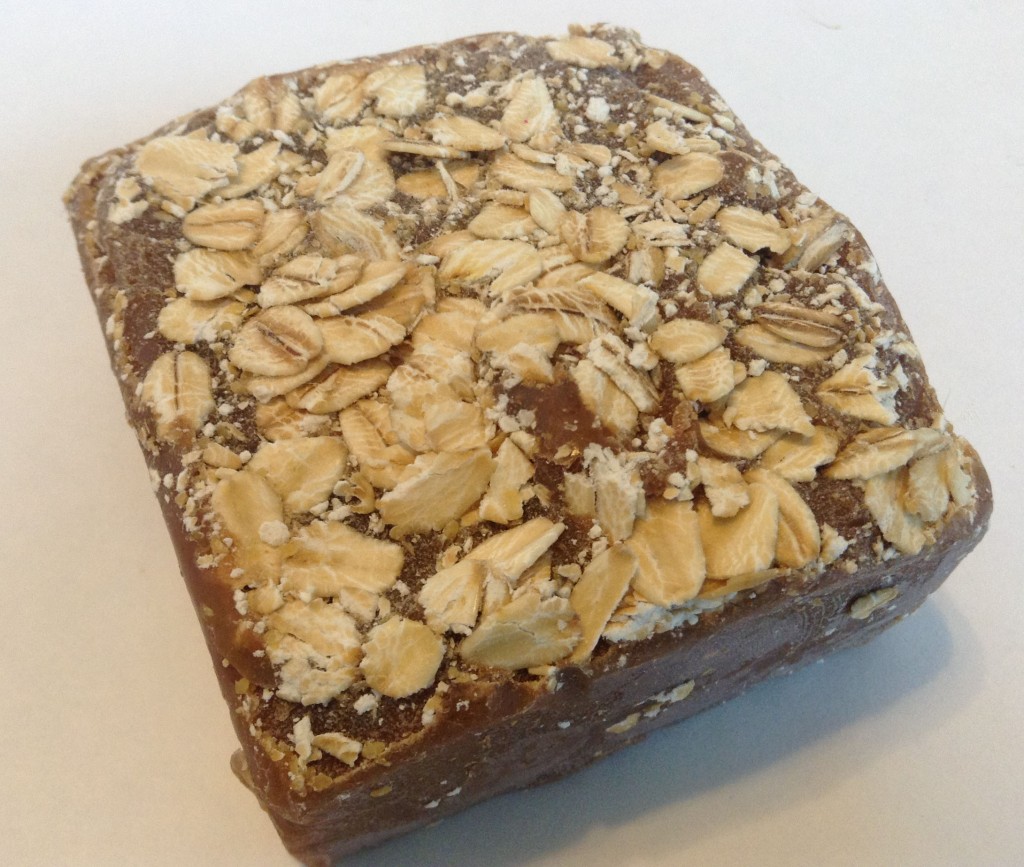
And I absolutely love the label on this one.
Seriously, how cute is that? Southern Romance, and the couple sitting on the hood of a Chevy pickup complete with cowboy boots together with the rustic font? Awesome! Might be the cutest packaging I’ve ever seen.
But look at what you see when you pull off the cigar band.
Don’t you love it? It’s beautiful! Look at the oats on the top and even the drag marks make it seem somehow more wholesome and natural than it would if they had been planed away.
And check out this Cocoa Coffee soap.
It smells awesome and feels so smooth.
I think this last one even has dandelion flowers in it. It’s so pretty.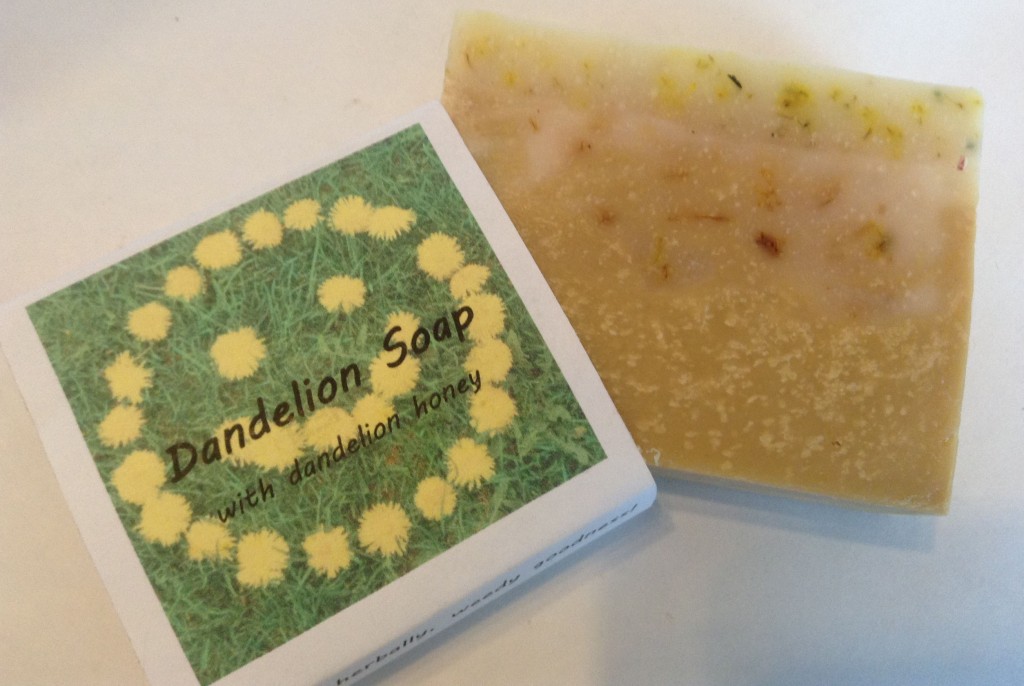
Opening this box made me want to ditch the colors and fancy swirls and make a natural soap again. I made a new batch of the Lavender Oatmeal, but I wanted to make something new, too.
Then I happened upon Chagrin Valley Soap and Salve’s website through some circuitous route through the web, and I was inspired by the simple beauty of their soaps. There truly is nothing like a natural-looking bar of soap.
I had been wanting to make an almond soap for a while, but thinking about ways I could make it more natural prompted me to try making my own almond milk. I tried a recipe found at Frugally Sustainable via Pinterest:
- Soak 1 cup of almonds overnight (she recommends 48 hours, but 24 was fine for me).
- Peel off the skins. She didn’t say to do this, but I did.
- Put four cups of distilled water in a blender along with the peeled almonds.
- Blend until smooth. It took me a minute.
- Strain milk from ground almonds with cheesecloth. I had to use a tea strainer because I don’t have cheesecloth. I am definitely getting one because a tea strainer was slow going.
The milk might taste better if you used three cups of water instead of four. It tasted fine—sort of like milk with no milk fat flavor, if that makes sense.
Before I drank any of it, however, I measured out the amount I’d need for my soap recipe and froze it overnight.
The next day, I used it instead of water in my lye.
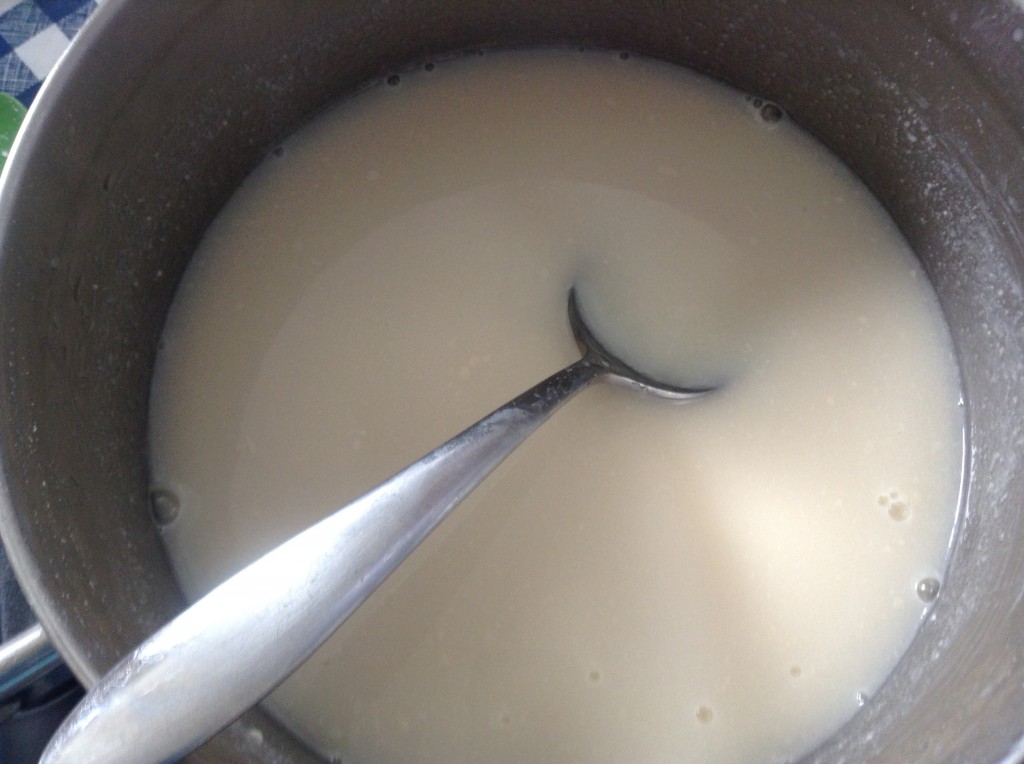 This is what it looked like once the lye was fully incorporated. It stayed a pretty, creamy white and the temperature never rose above 77°F. Isn’t it pretty?
This is what it looked like once the lye was fully incorporated. It stayed a pretty, creamy white and the temperature never rose above 77°F. Isn’t it pretty?
I decided to add some honey to the soap, even though I knew that the fragrance oil I planned to use had vanillin in it and the soap was likely to discolor. Honey can also discolor.
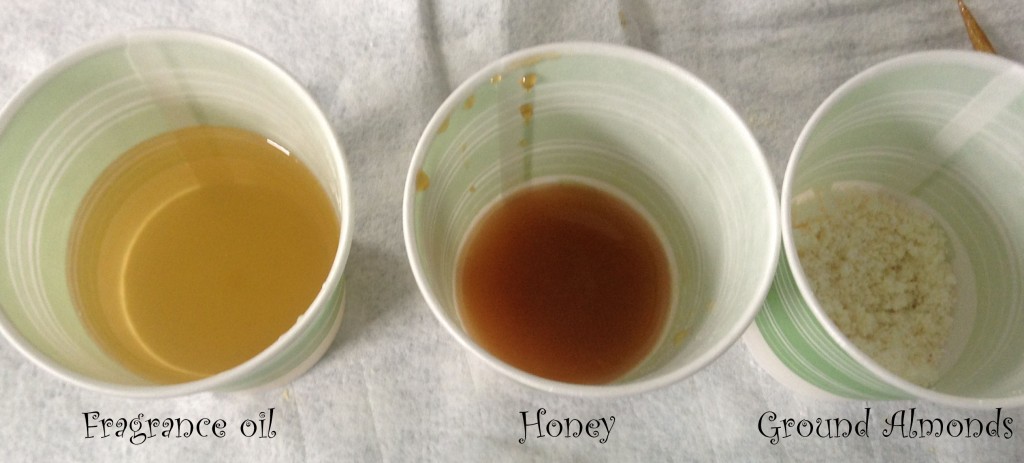 The honey is dissolved in a little bit of the almond milk. I decided to use a tablespoon of the ground almonds in the soap itself.
The honey is dissolved in a little bit of the almond milk. I decided to use a tablespoon of the ground almonds in the soap itself.
To keep the soap a little bit lighter, I did add titanium dioxide, but I’m not sure how much that will really prevent the vanilla from discoloring the soap.
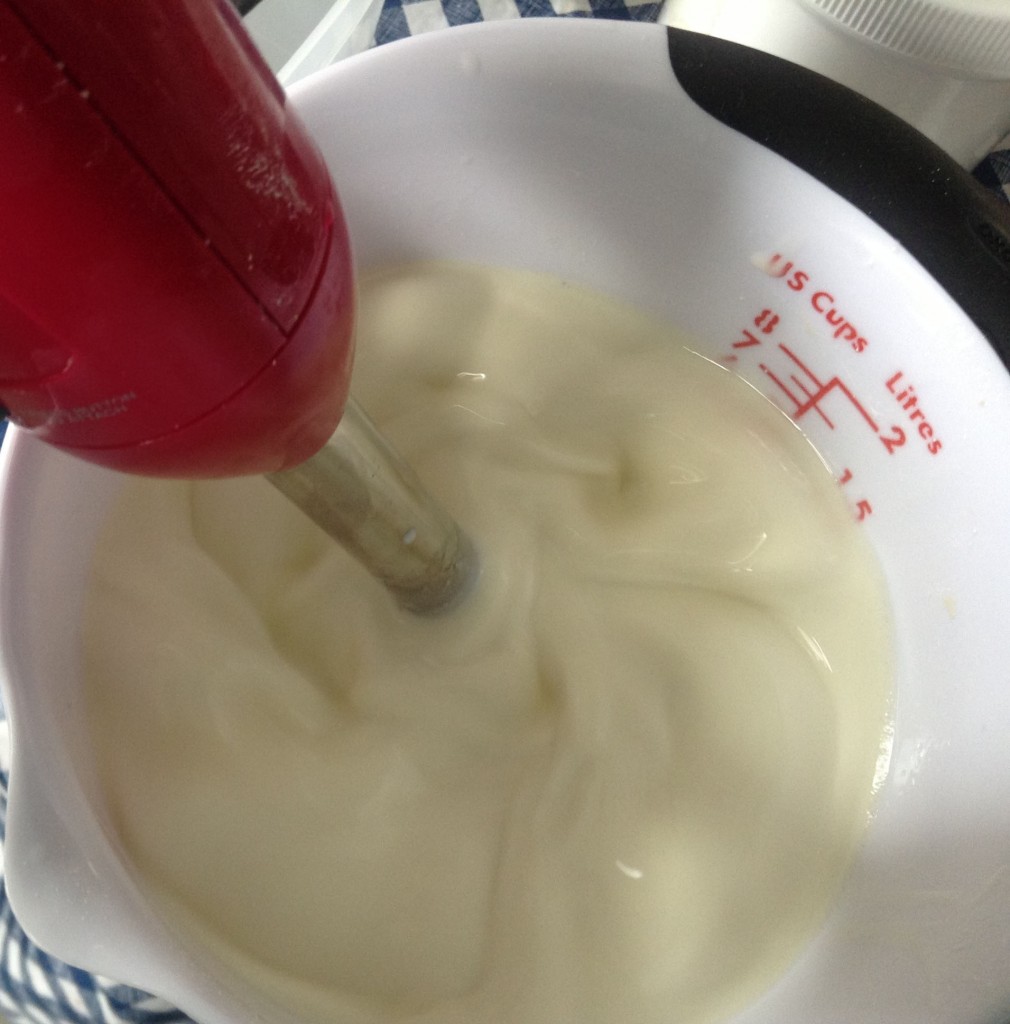 Here is the oil mixture with some kaolin clay and titanium dioxide. The recipe I used included sweet almond oil, coconut oil, olive oil, palm oil, shea butter, and castor oil.
Here is the oil mixture with some kaolin clay and titanium dioxide. The recipe I used included sweet almond oil, coconut oil, olive oil, palm oil, shea butter, and castor oil.
I should have taken more pictures of the soap in process, but I didn’t. Here is how it looked when I unmolded it the next day. Don’t you love the cute honeycomb look? I love to do honeycombs on my honey soaps.
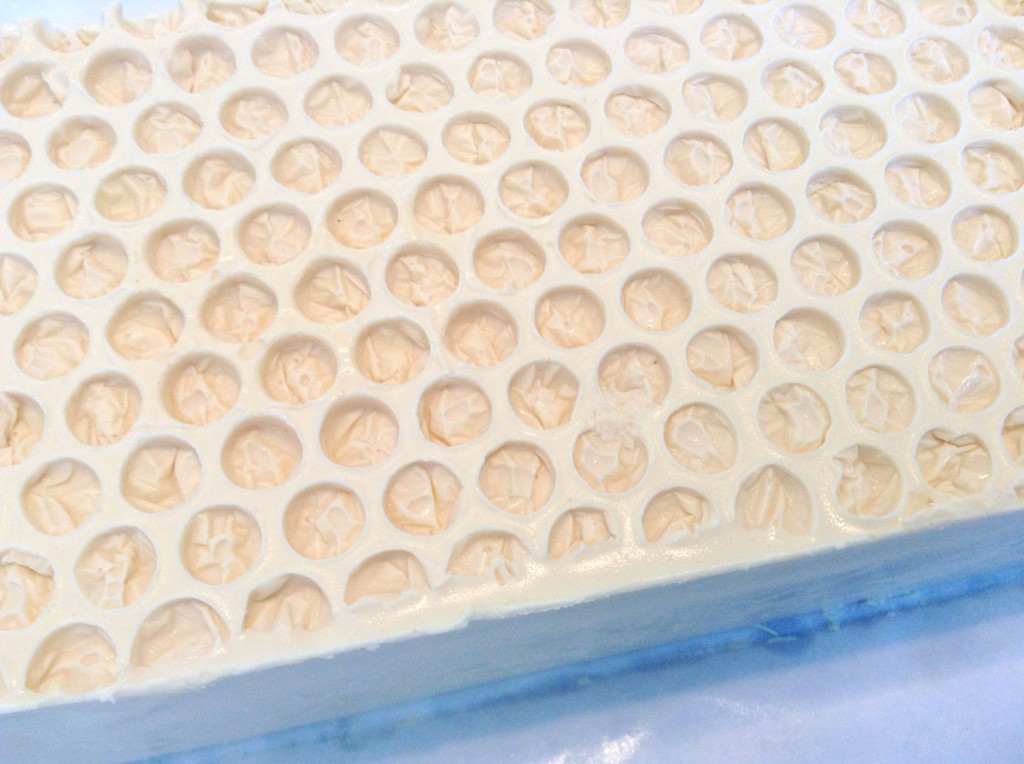 You can’t really tell because of the honeycomb top, but this soap turned out rock hard and really creamy in appearance. I am not sure if that’s the almond milk or the large amount of sweet almond oil. I have never used almond milk before, and my recipes generally have around 10% almond oil at most, but this recipe has 25% sweet almond oil.
You can’t really tell because of the honeycomb top, but this soap turned out rock hard and really creamy in appearance. I am not sure if that’s the almond milk or the large amount of sweet almond oil. I have never used almond milk before, and my recipes generally have around 10% almond oil at most, but this recipe has 25% sweet almond oil.
Here are the cut bars.
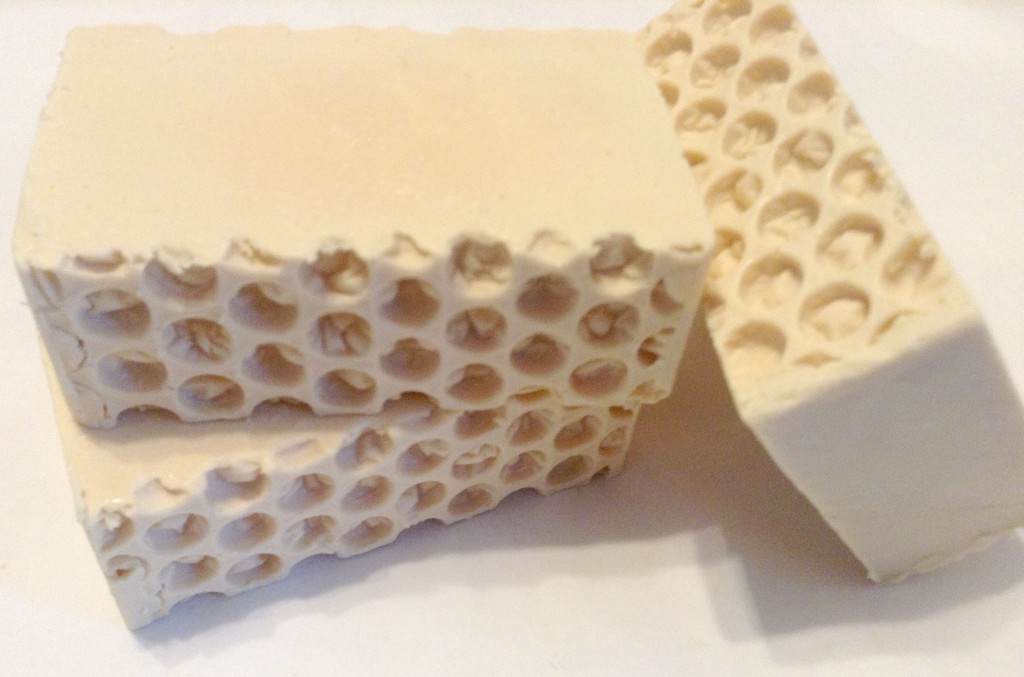 I do not know how much they might darken as they cure, as the vendor from which I purchased the fragrance oil warned that this fragrance does cause discoloration. The titanium dioxide will counter it some, but if they stay this color or perhaps darken a little more, I’ll be satisfied. But then again, this is supposed to look natural, so if it darkens a lot, I’ll just roll with it. It smells absolutely incredible. Even the sweet honey scent comes through. If you are an almond fan, you are going to want to this soap.
I do not know how much they might darken as they cure, as the vendor from which I purchased the fragrance oil warned that this fragrance does cause discoloration. The titanium dioxide will counter it some, but if they stay this color or perhaps darken a little more, I’ll be satisfied. But then again, this is supposed to look natural, so if it darkens a lot, I’ll just roll with it. It smells absolutely incredible. Even the sweet honey scent comes through. If you are an almond fan, you are going to want to this soap.
Ingredients: homemade almond milk, sweet almond oil, coconut oil, olive oil, sustainable palm oil, sodium hydroxide, shea butter, fragrance, castor oil, finely ground almonds, kaolin clay, titanium dioxide, honey.

